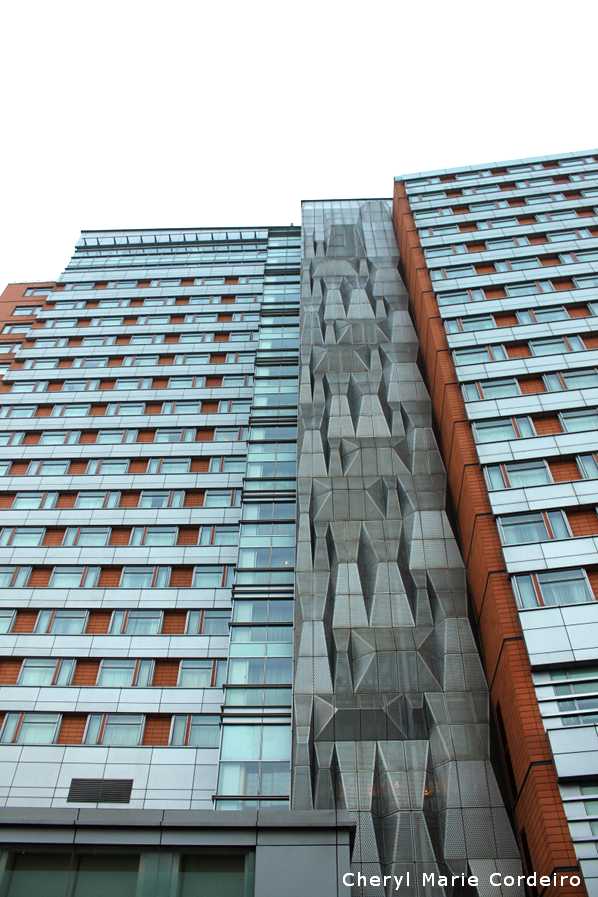Crowne Plaza Shanghai Fudan Hotel
Text & Photo © JE Nilsson, CM Cordeiro 2013
When looking at the facade of the Crowne Plaza Shanghai Fudan Hotel it is difficult to not read into the facets of its facade some influences from the constructivist art movement that grew out of Russian Futurism in the early years of the 20th century.
Constructivist architecture flourished in the Soviet Union in the 1920s and early 1930s. Its ideas were revolutionary at the time and combined advanced technology and engineering with social purposes.
This era was also a formative one for Shanghai, as it acted as an eastern melting pot between East and West in the Warlord epoque of China in the 1910s, around the years of the Russian revolution and the financial boom of WWI. As such one would not be too surprised to find traces of these ideas right here in the Yangpu district of Shanghai where much of China’s academia flourishes today.
It is even difficult not to draw references to Russian industrialism and earlier, the cubism of Picasso and Braque, in the facets of the facade looking like human beings standing on top of, lifting, carrying and supporting each other. Architecture depicting the human strive to higher and higher achievements.
The Russian bicyclist painting by Natalia Goncharova (Cyclist, 1913) comes to mind as another reference to the Russian futurism of the 1910’s. This can be seen in contrast to the slightly older painting by Ramon Casas, of himself and Pere Romeu on a tandem bicycle, 1897. The two works of art illustrate a dramatic change in ideologies and thus realities, that had come by in a mere few decades. The latter was painted specifically for the interior of the Els Quatre Gats in Barcelona, a restaurant and bar that was pretty much the center of the early Modernisme art movement in Barcelona at the turn of the century, and also the very place where Picasso had his first exhibition.
